Finding Love at the Farmers Market
“I suggest trying those turnips. Those turnips will change your life.”
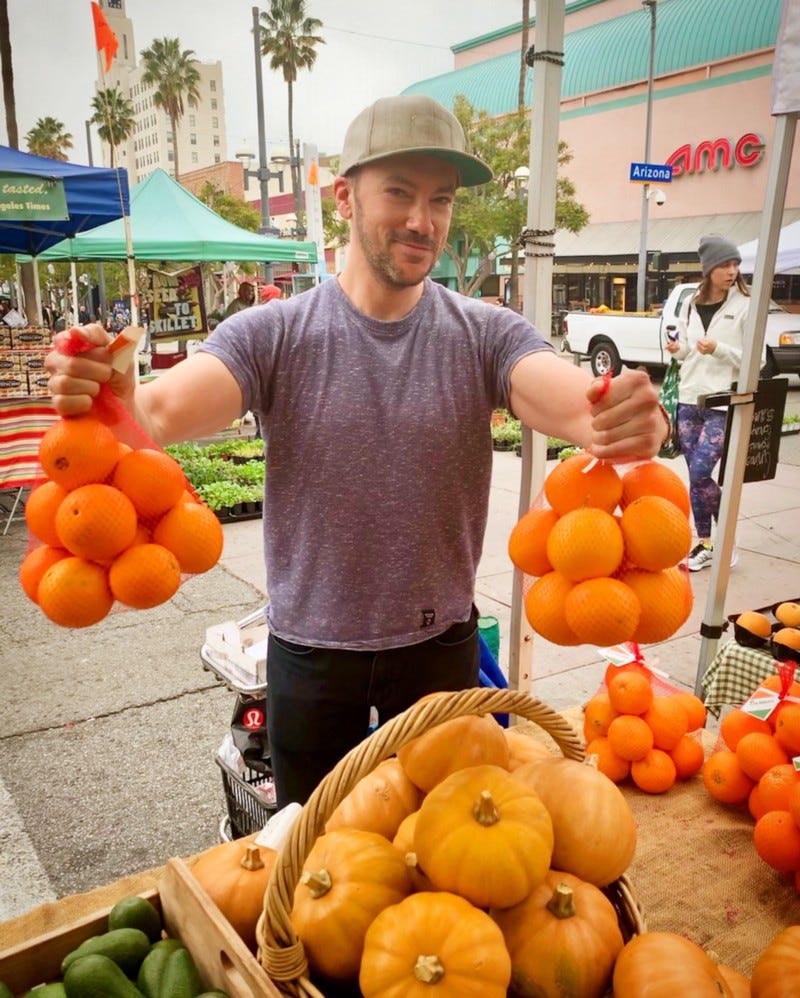
My first crush on California was the beach. I got hooked on the sunshine and laid-back vibes. But I fell in love at the farmers market.
“These turnips will change your life.”
Spend enough time at the Santa Monica Farmers Market and you learn things. The difference between a Fuyu persimmon and Hachiya persimmon. Maitake mushrooms and Lobster mushrooms.
“These are White Sapotes, also called Custard Apples. They’re native to Central America and Mexico. The sweetest, softest fruits. Get em while they’re firm — when they’re ripe, they’re so soft you can’t hardly carry em!”
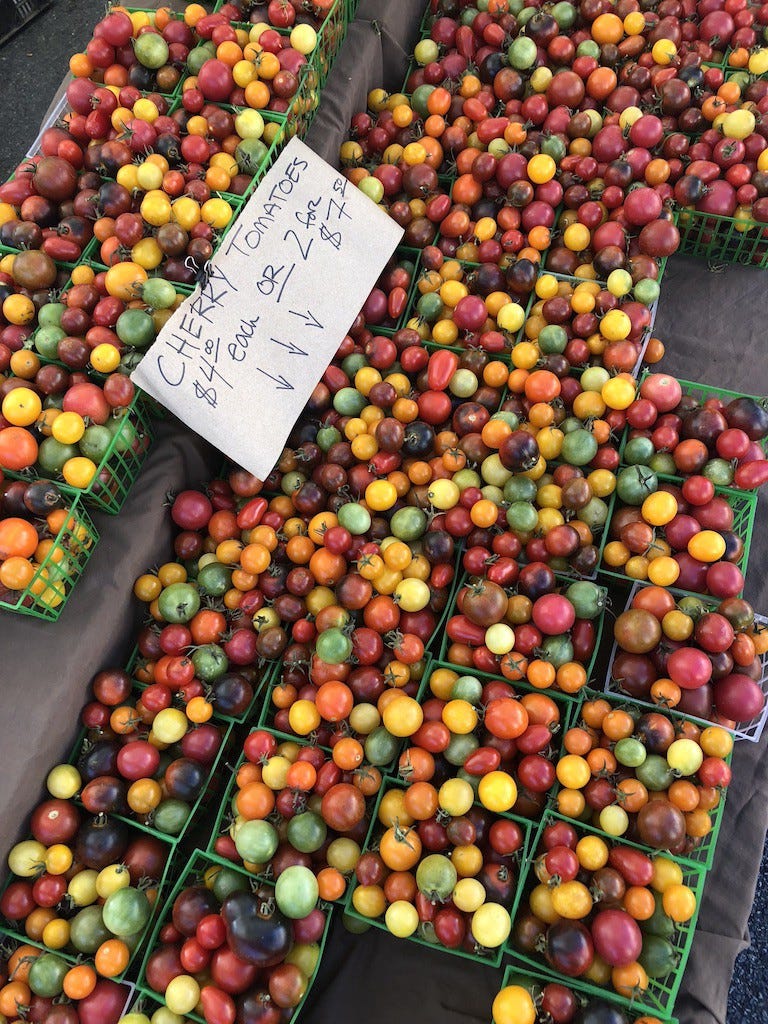
See how glorious those hand-grown vegetables look: kale, Romaine lettuce, tomatoes. Bell peppers, their rainbow colors exploding out at you.
See how they have this life and energy in them. That signature of love from that small family farm that labored all year to cultivate these living souls that produce this magical fruit.
“This is Ruta. Latinos use it for toothaches. Plant it near your home’s entrance to keep evil spirits out.”
“Yellowtail, good choice. See that part of the fish? That’s the belly — slice that part off and eat it raw.”
“Thank you for supporting local fishermen!”
What draws me to the farmers market? As a kid I went to summer camp on a farm in Vermont. Learned how to milk goats, harvest crops. Cook up a farm-to-table meal.
I think I’ve missed that connection to nature as an adult, living and working in big cities.
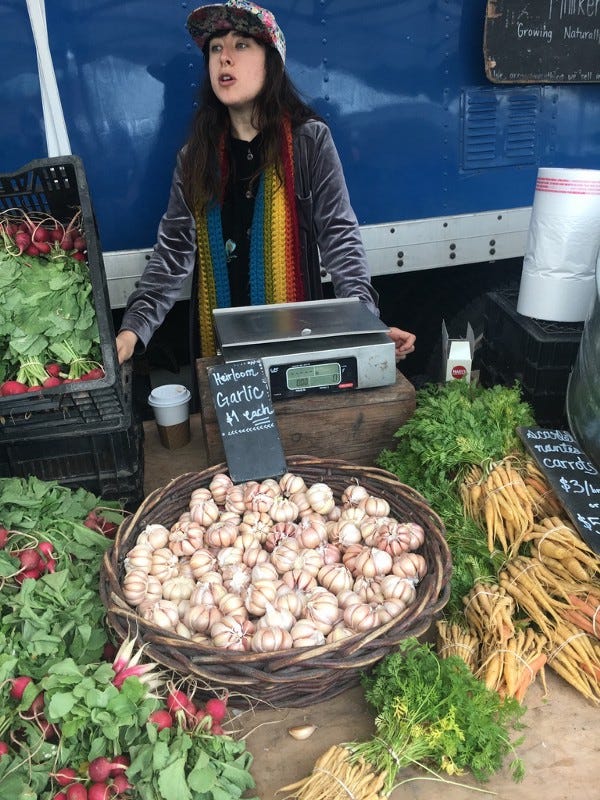
I talk to the egg lady. Learn about her free-range, grass-fed, organic eggs.
“We let the chickens go into different orchards. Let em eat oranges, peaches. It affects the flavor of the eggs. The color, too. They have orange yolks.”
“You can leave the eggs out unrefrigerated. They’ll last 2–3 weeks, so fresh they don’t go bad. The fridge is too cold…you’ll know they’re bad if they almost explode.”
I talk to a dairy farmer selling raw milk, kefir, butter and cheese. He tells me about the health benefits of eating raw dairy: The pasteurization process destroys milk’s beneficial probiotics and enzymes.
He explains how his farm rotates their animals. They move the cows around so they don’t eat the grass down to the soil. This allows the soil to be replenished, so they don’t destroy the microbiology.
I think of Anthony Bourdain. He inspired me to talk to the farmers, listen to their stories. To see food as more than fuel, to see it as culture — how each fruit and vegetable, every fish and dairy product is rooted in a person, a time and a place.
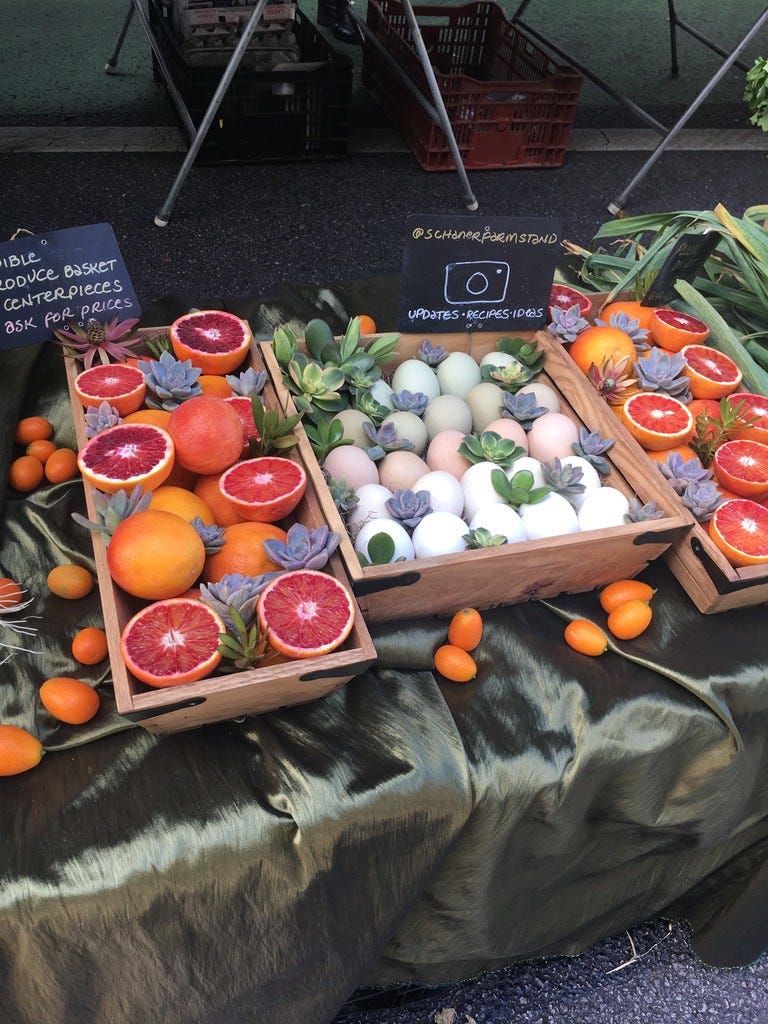
I talk to the date guy.
“Dates don’t freeze, so when you take them out of the freezer they’ll be like ice cream.”
“Dates are insane in everything. They’re good in smoothies, salads, or with goat cheese and olive oil. I put em in French toast, in my omelette, in my tea, in my sprout salad.”
“Just don’t put em in your slingshot. They have a serial number on them, so they’ll find you if you put em in a slingshot.”
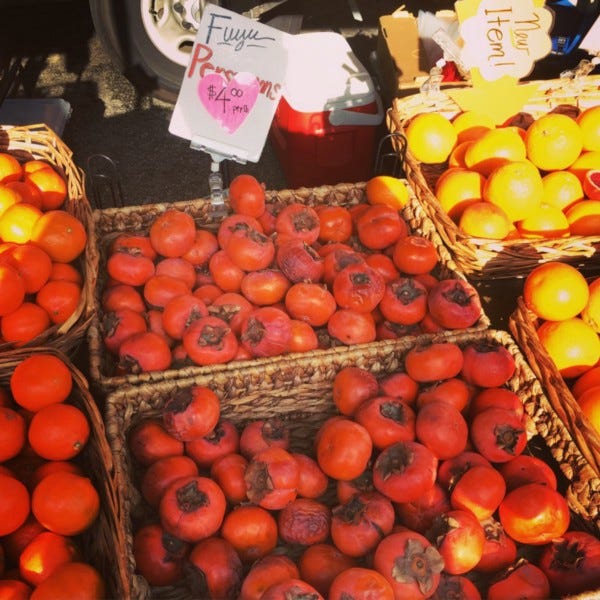
Almond butter, homemade and organic.
“We’ll give you a dollar back on the glass. We recycle the glass.”
Dried persimmons, $24 a pound.
“They’re dried for 2 months, massaged by hand every 2 days. Makes em super sweet.”
I learn about sustainable, water-saving agriculture. How we as eaters can reduce our water footprint and encourage farming that saves water. The virtual water footprint of one egg is 23 gallons water. One pound of butter, 3000 gallons water.
When soil is treated with pesticides, the soil’s microbiology is destroyed. it can’t hold water at the same level. Not like the soil of organic farmers, which is like a sponge. They can grow food with a lot less water.
Pistachio oil?
“I use it on salads or cook it at low temperature. Chefs use it for plating ’cause its green, looks cool on a dish. It’s an awesome oil.”
Puntarella?
“For salads, soak it in water for 30 minutes, gets the bitterness out. A chef came by here, said if he’s gonna sauté it, he soaks it in milk!
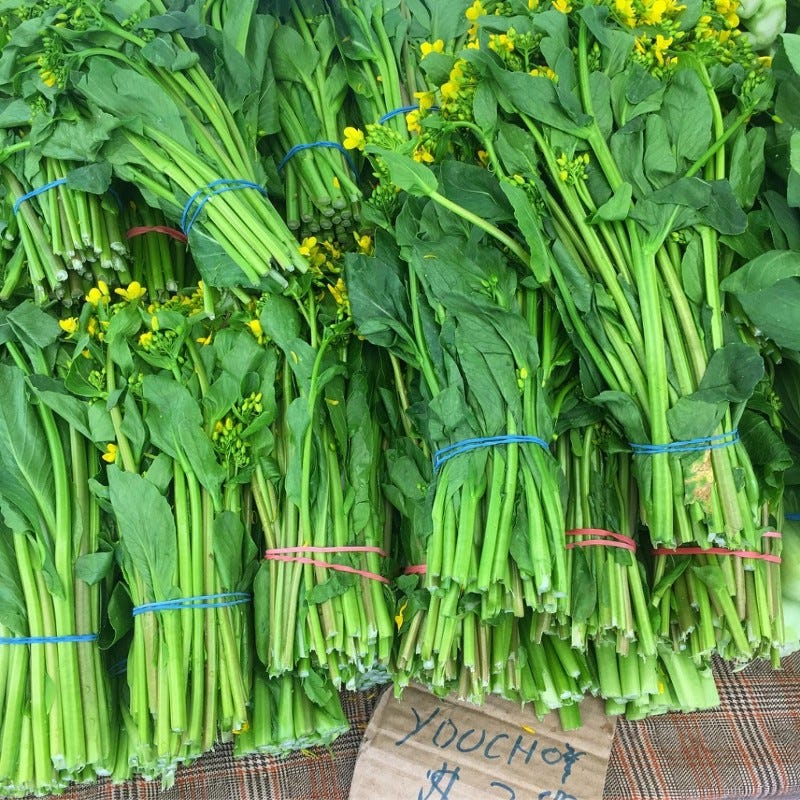
I learn about “slow farming.” No fertilizers. Just water, time, soil, light.
At noon, farmers and bakers gather at the Kandarian Organic Farms stand to share artisanal breads, cheeses, jams and pickles. The bread is made with ancient grains and seeds grown with eco-friendly “polyculture” farming practices, i.e. more than one plant grows in the same field. It’s good for the health of the land and our health, too — these grains contain essential amino acids missing from typical American diets.
What’s a Mexicola avocado?
“You can eat the skin. They’re really rich.”
What do they taste like?
“It’s hard to describe one avocado’s taste. We grow 25 kinds of em.”
Sugar cane — how do you eat it?
“You peel the skin and suck on the end.”
Purple Japanese sweet potato?
“You can boil em, mash em or eat em raw. I made hash browns with em this morning!
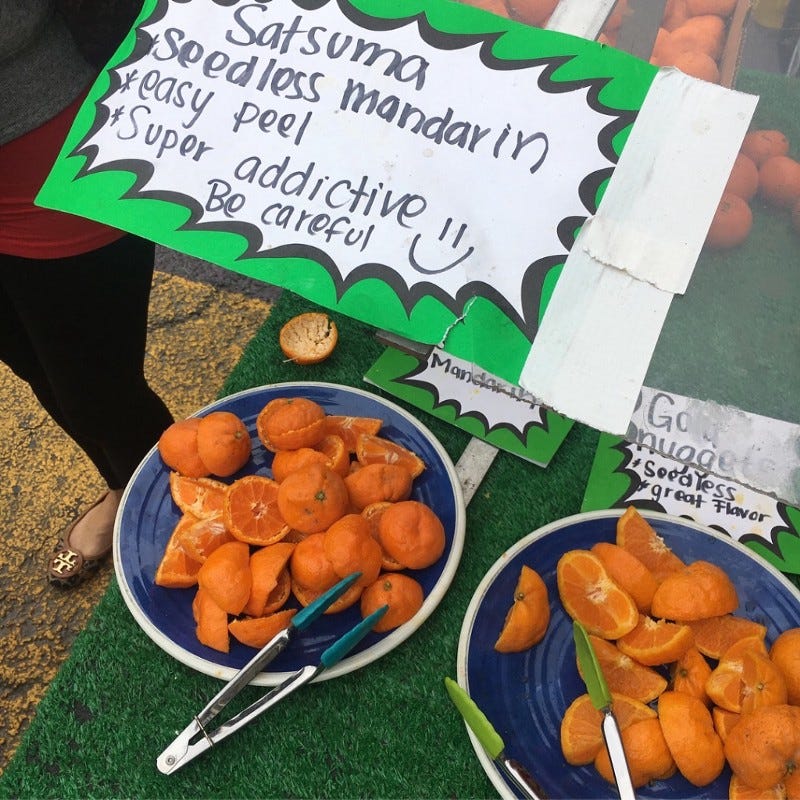
Free samples: Pink Lady apples, Valencia oranges, Satsuma Mandarins.
A child asks: Which apples are the crunchiest?
“They were all harvested yesterday, so they’re all crunchy.”
Fuerte avocados, from a farm outside San Diego. I ask the farmer, are they good?
He smiles. “The best.”


